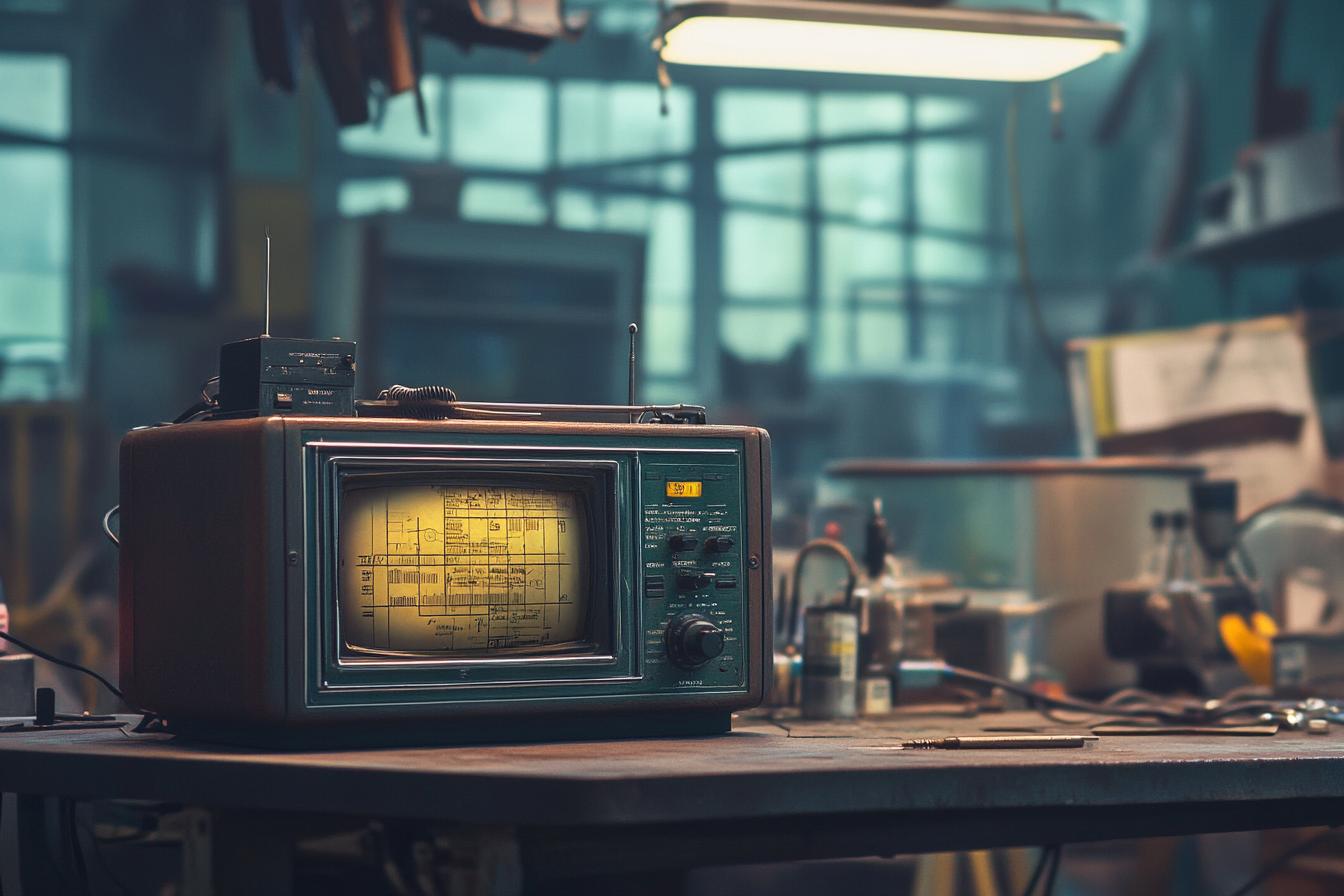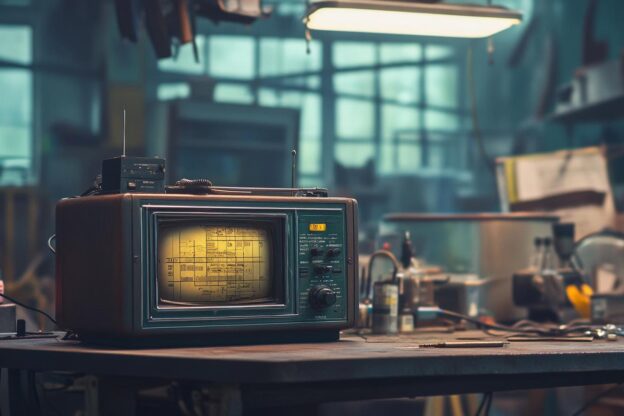Radio news repair is a specialized field that requires a unique blend of technical expertise and a passion for news broadcasting. Repair technicians must understand the intricate workings of radio transmitters, receivers, and audio equipment, as well as the nuances of sound quality and broadcast regulations. Imagine a news station suddenly losing its ability to transmit during a major breaking story; the pressure is immense to restore the signal quickly and reliably. This is where radio news repair technicians step in, utilizing their knowledge and tools to diagnose and fix the problem, ensuring that vital information reaches the public without interruption.
Beyond the technical aspects, radio news repair technicians often work closely with broadcast engineers and journalists to understand the specific needs of each station. They might be called upon to troubleshoot a faulty microphone during a live interview, repair a damaged antenna in a remote location, or even restore an antique radio transmitter to its original glory. This work requires not only technical skill but also a deep appreciation for the importance of news dissemination and the role that radio plays in keeping people informed and connected.

Radio News Repairing
1. Radio News Repairing
Radio news repairing is a specialized field that focuses on restoring and maintaining the functionality of vintage and modern radio receivers, transmitters, and other related equipment. This involves troubleshooting electronic circuits, identifying faulty components, and replacing or repairing them. Repair technicians often possess a deep understanding of analog and digital electronics, as well as the history and evolution of radio technology.
Repairing radio news equipment goes beyond simply fixing broken parts. It involves preserving a vital part of communication history and ensuring that these devices continue to function for future generations. Whether it’s restoring a classic tube radio to its original glory or modernizing a vintage transmitter for contemporary use, radio news repairing plays a crucial role in preserving the legacy of radio broadcasting.
2. Troubleshooting and Diagnosis
When a radio breaks down, you’ll need to use your detective skills to pinpoint the problem. Start by carefully listening to the symptoms. Is there a complete lack of sound, a distorted signal, or a buzzing noise? Next, visually inspect the radio. Look for loose wires, cracked components, or any other signs of damage. You can also use a multimeter to test the voltage and current flowing through different parts of the radio. These initial steps will provide valuable clues to help you identify the issue.
Once you have a good understanding of the problem, you can begin to troubleshoot. This involves systematically checking and testing different components of the radio. For example, you may need to check the power supply, the antenna, the amplifier, or the speaker. As you go through each component, be sure to note any abnormal readings or behaviors. This will help you isolate the faulty component and determine the best course of action for repair.
3. Component replacement
Component replacement is a crucial step in radio news repair. When diagnosing a faulty radio, you’ll often find that a specific component needs replacing. This could be a capacitor, resistor, transistor, or even a larger part like a speaker or tuner. Identifying the faulty component requires careful examination, using a multimeter or other testing equipment. Once you’ve pinpointed the problem, you can carefully remove the old component and replace it with a new one, ensuring that you use the correct type and value.
Replacing components can be a delicate task, especially with older radios that have intricate circuitry. You’ll need to exercise caution to avoid damaging surrounding components and ensure that you connect the new component properly. After replacement, you should thoroughly test the radio to verify that the repair was successful and the radio is functioning properly. This might involve checking for sound quality, tuning capabilities, and overall performance. If you’re unsure about any part of the process, it’s always best to consult a professional repair technician.
4. Soldering and circuit board repair
Soldering and circuit board repair are essential skills for anyone working on radio news equipment. Soldering involves melting solder, a metal alloy, to create an electrical connection between components. This process requires precision and steady hands, as even a small amount of excess solder can create a short circuit. You’ll use a soldering iron to melt the solder, and flux to prevent oxidation and improve the flow of solder. The art of soldering comes with practice, and you’ll learn techniques to create strong and reliable connections.
Circuit board repair often involves identifying and replacing faulty components. This can range from simple tasks like replacing a broken resistor to more complex repairs like tracing a faulty circuit. You’ll need to use a multimeter to test components and understand how they function within the circuit. Remember, patience and careful inspection are key when working with delicate circuit boards. You’ll find that with practice, you can tackle even the most intricate repairs with confidence.
5. Antenna and signal issues
A weak or faulty antenna can significantly impact your radio’s reception. If you’re experiencing static, crackling, or a complete lack of signal, the antenna is often the culprit. Check for any physical damage to the antenna, such as bends or breaks. Additionally, ensure the antenna is properly connected to your radio and positioned correctly. If the antenna is mounted externally, try adjusting its direction to find a better signal.
Sometimes, the problem isn’t with the antenna itself, but with the signal strength in your area. If you’re in a location with poor reception, even a perfectly functioning antenna might struggle to pick up a clear signal. You can try using an antenna amplifier to boost the signal, or consider moving to a location with better reception. Remember, patience is key when troubleshooting radio reception issues. Experiment with different antenna positions and settings until you find the sweet spot for optimal sound quality.
6. Audio and sound quality restoration
Imagine you have an old radio recording of a loved one’s voice or a rare historical broadcast. The audio might be filled with crackles, pops, and hiss, making it difficult to understand. This is where audio and sound quality restoration comes in. Using specialized software and techniques, audio restoration experts can meticulously clean up these imperfections, removing unwanted noise and restoring the original sound. This process involves identifying and isolating the noise from the desired audio, applying filters to reduce the noise, and carefully adjusting the audio to improve clarity and intelligibility.
Sound quality restoration can also enhance the audio experience in a variety of ways. For instance, audio restoration can adjust the volume levels, improve the frequency response, and even remove unwanted echoes or reverberation. By applying these techniques, the restored audio can sound much clearer, more natural, and more enjoyable to listen to. This can be particularly beneficial when restoring old recordings or preparing audio for broadcasting or distribution.
Conclusions
So, there you have it! From fixing busted antennas to bringing back that sweet, sweet sound, we’ve covered the basics of radio repair. We’ve talked about figuring out what’s wrong with your radio, swapping out parts, and even fixing the electrical bits and bobs. It’s not always easy, but with a little patience and the right tools, you can breathe new life into your favorite radio. So, don’t throw in the towel on that old radio just yet. Get out your soldering iron, grab your trusty screwdriver, and get ready to bring back the tunes!
